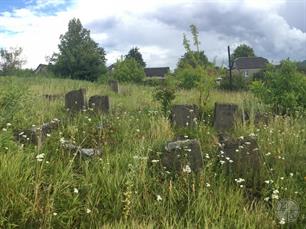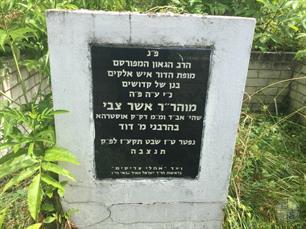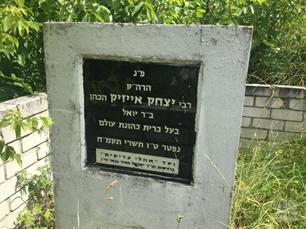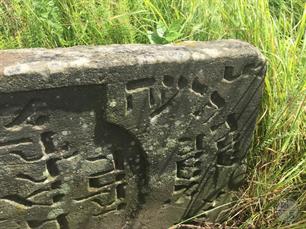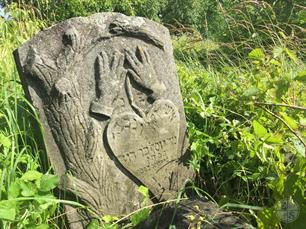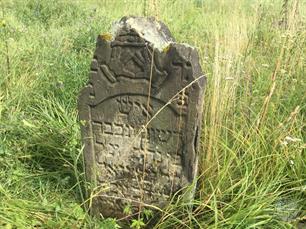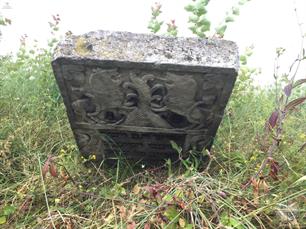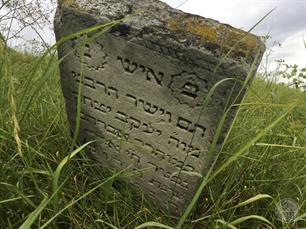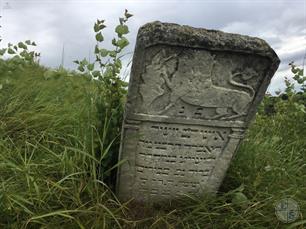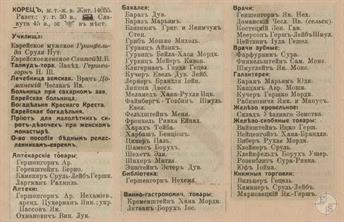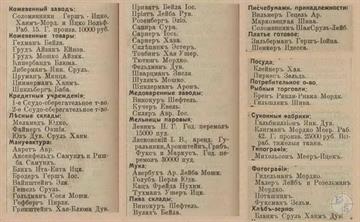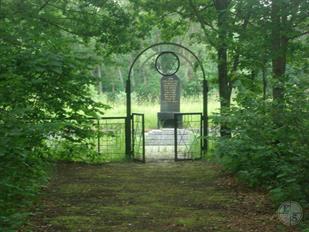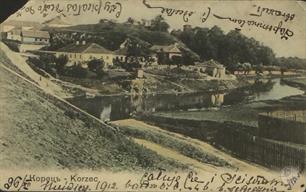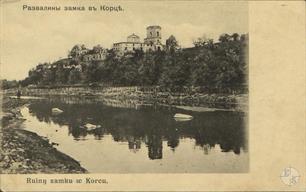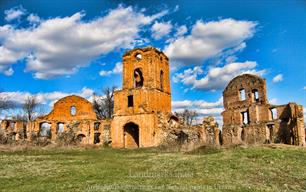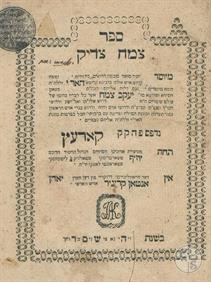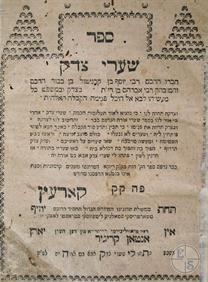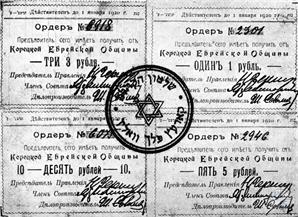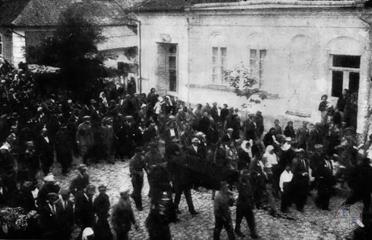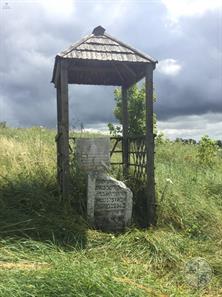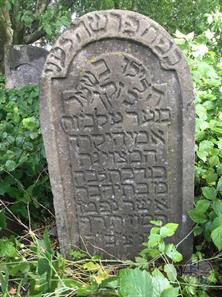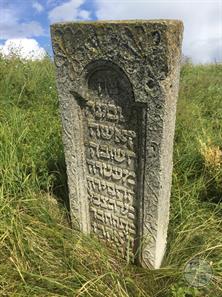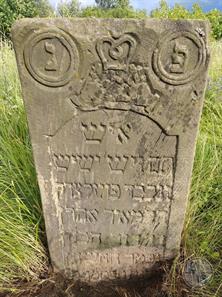Korets & Novyy Korets
Rivne district, Rivne region
Sources:
- Jewish encyclopedia of Brockhaus & Efron;
- Russian Jewish encyclopedia. Translated from Russian by Eugene Snaider;
- The All South-Western Territory: reference and address book of the Kyiv, Podolsk and Volyn provinces. Printing house L.M. Fish and P.E. Wolfson, 1913;
- Shtetl Routes. Korets - guidebook
- Elik Kligstein, Dov Bernstein, Yakov Wolach. The Korets Book: In Memory Of Our Community That Is No More. Tel Aviv, 1959. Translated from Hebrew by Sara Mages, JewishGen
- I.A. Altman , A.I. Kruglov, "Korets", [in:] I.A. Altman (ed.), Holokost na tieritorii SSSR, Moscow 2009. Translated from Russian by Eugene Snaider
Photo:
- Anna Volf, Landmarks in Ukraine. Korets
- European Jewish Cemeteries Initiative. Korets Jewish Cemetery
- Biblioteka Narodowa Polona. Korzec
- Center for Jewish Art. Korets
- Archive of Aiala Feller. Yaakov Yosef Horenstein's Synagogue in Korets
- Oks.rv, Wikipedia. Place of execution of Jews in the village of Kazak
- American Jewish Joint Distribution Committee
- Solomon Yudovin, Archive of the An-sky expedition
- Korets (Wolyn); sefer zikaron le-kehilatenu she-ala aleha ha-koret
- Jewish encyclopedia of Brockhaus & Efron;
- Russian Jewish encyclopedia. Translated from Russian by Eugene Snaider;
- The All South-Western Territory: reference and address book of the Kyiv, Podolsk and Volyn provinces. Printing house L.M. Fish and P.E. Wolfson, 1913;
- Shtetl Routes. Korets - guidebook
- Elik Kligstein, Dov Bernstein, Yakov Wolach. The Korets Book: In Memory Of Our Community That Is No More. Tel Aviv, 1959. Translated from Hebrew by Sara Mages, JewishGen
- I.A. Altman , A.I. Kruglov, "Korets", [in:] I.A. Altman (ed.), Holokost na tieritorii SSSR, Moscow 2009. Translated from Russian by Eugene Snaider
Photo:
- Anna Volf, Landmarks in Ukraine. Korets
- European Jewish Cemeteries Initiative. Korets Jewish Cemetery
- Biblioteka Narodowa Polona. Korzec
- Center for Jewish Art. Korets
- Archive of Aiala Feller. Yaakov Yosef Horenstein's Synagogue in Korets
- Oks.rv, Wikipedia. Place of execution of Jews in the village of Kazak
- American Jewish Joint Distribution Committee
- Solomon Yudovin, Archive of the An-sky expedition
- Korets (Wolyn); sefer zikaron le-kehilatenu she-ala aleha ha-koret
Korets (ukr. Корець, rus. Корец), city (since 1940), until 2020 - the district center in the Rivne region. Known from 1150. In the 16-18 centuries - the township of Lutsk Powiat Volyn Voivodeship as part of the Commonwealth. Since 1793 - as part of the Russian Empire. In the 19th - beginning of the 20th century - in the Novograd-Volynsky district of the Volyn province. In 1919–39 - in the Volyn Voivodeship as part of Poland, in 1939–91 - as part of the Ukrainian SSR.
In 1629, approx. 560 Jews lived in Korets (c. 8%),
in 1765 - 937,
in 1847 - 3832,
in 1897 - 4608 (76.0%),
in 1910 - 9134 (66.5%),
in 1921 - 4120,
In 1937 - 4895 Jews.
Jews settled in Korets in the 16th century, though, according to the local legend, Jews settled there much earlier. As in other towns, the Jewish community suffered significant losses during the mid 17th century Cossack revolution. By 1655, the devastation of the Cossack-Polish War left only 10 Jewish houses in Korets. The oldest matzevah at the Jewish cemetery dates back to the 17th century, and towards the end of that century a synagogue was built. The main occupations of the Korets Jewish population in the 18th century were crafts and trade; among other businesses, Jews owned two tanneries and 14 stores in the marketplace.
In the first half of the 18th century, Korets was home to Dov Ber of Mezheritch, known as Maggid of Mezherich: after the death of the Baal Shem Tov in 1760, he gathered at his table in Mezherich (near Rivne) the new generation of religious enthusiasts, who called themselves Hasidim, and who eventually established the key centers of the rising Hasidic movement in Karlin, Liady, Berdichev, Chernobyl, Hannipol, and Vitebsk.
In the second half of the 18th century, most of the Jews in Korets associated themselves with the Hasidic movement.
In 1760, Rabbi Pinhas Shapiro, a close associate of the founder of Hasidism, the Baal Shem Tov, moved to Korets from Shargorod and soon became known as Rebbe Pinhas of Korets. Inspired by their father, his sons established one of the most significant Hasidic printing presses in East Europe – the one in Slavuta.
In 1629, approx. 560 Jews lived in Korets (c. 8%),
in 1765 - 937,
in 1847 - 3832,
in 1897 - 4608 (76.0%),
in 1910 - 9134 (66.5%),
in 1921 - 4120,
In 1937 - 4895 Jews.
Jews settled in Korets in the 16th century, though, according to the local legend, Jews settled there much earlier. As in other towns, the Jewish community suffered significant losses during the mid 17th century Cossack revolution. By 1655, the devastation of the Cossack-Polish War left only 10 Jewish houses in Korets. The oldest matzevah at the Jewish cemetery dates back to the 17th century, and towards the end of that century a synagogue was built. The main occupations of the Korets Jewish population in the 18th century were crafts and trade; among other businesses, Jews owned two tanneries and 14 stores in the marketplace.
In the first half of the 18th century, Korets was home to Dov Ber of Mezheritch, known as Maggid of Mezherich: after the death of the Baal Shem Tov in 1760, he gathered at his table in Mezherich (near Rivne) the new generation of religious enthusiasts, who called themselves Hasidim, and who eventually established the key centers of the rising Hasidic movement in Karlin, Liady, Berdichev, Chernobyl, Hannipol, and Vitebsk.
In the second half of the 18th century, most of the Jews in Korets associated themselves with the Hasidic movement.
In 1760, Rabbi Pinhas Shapiro, a close associate of the founder of Hasidism, the Baal Shem Tov, moved to Korets from Shargorod and soon became known as Rebbe Pinhas of Korets. Inspired by their father, his sons established one of the most significant Hasidic printing presses in East Europe – the one in Slavuta.
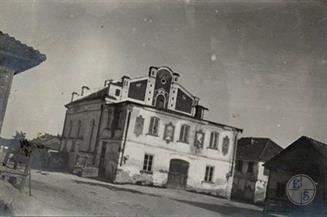 |
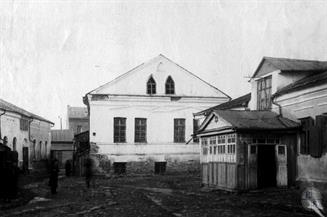 |
| Great Synagogue in Korets, 1920 | Korets, synagogal complex. The star of David on the pediment is visible to the right |
 |
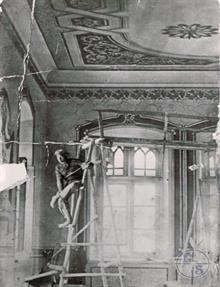 |
| Great Synagogue in Korets, 1912 | The process of painting walls in the synagogue of Gorenstein, Korets, 1929 |
In 1776, a Jewish printer (whose name is not known) arrived in Korets after obtaining a privilege from Count Jуzef Klemens Czartoryski to establish a Jewish printing press. The Korets printing press operated until 1819, and over 40 years it published about 93 books. As many other printing presses established in Volhynia and Podolia at that time, the Korets printing press published predominantly books on Kabbalah and Hasidism, prayer books with Kabbalistic commentaries and traditional books of Jewish learning containing glossas provided by Hasidic masters. That printing house played a major role in fostering the spread of Hasidic Judaism in Poland and neighbouring countries.
In 1780, the Korets printing press published the book Toldot Yaakov Josef by Yaakov Yosef of Polonne, one of the first foundational books presenting the theology of Hasidism.
In the 1780s, Jan Antoni Krьger, a Christian who owned a Hebrew printing house in Novyi Dvir (Nowy Dwуr) took over the Korets publishing house and ran it until 1786. He had an excellent understanding of the Jewish market – hence published major Kabbalistic books and Hasidic commentaries to Kabbalistic sources.
In 1798, a printing company owned by Shmuel ben Issachar Ber Segal and his father-inlaw Tzvi Hirsch ben Arie Leib Margaliot took over the Korets printing business. Yet the change of hands changed little in the books repertoire of the Korets printing press: till the mid-1830s, when this press was denounced by the anti-Hasidic minded Jewish censors and advisers and eventually shut down, Korets remained one of the keys which nourished the Hasidic movement in east Europe with Kabbalistic prayer books, classical sources of Jewish mysticism, and newest writings of the Hasidic masters.
In 1780, the Korets printing press published the book Toldot Yaakov Josef by Yaakov Yosef of Polonne, one of the first foundational books presenting the theology of Hasidism.
In the 1780s, Jan Antoni Krьger, a Christian who owned a Hebrew printing house in Novyi Dvir (Nowy Dwуr) took over the Korets publishing house and ran it until 1786. He had an excellent understanding of the Jewish market – hence published major Kabbalistic books and Hasidic commentaries to Kabbalistic sources.
In 1798, a printing company owned by Shmuel ben Issachar Ber Segal and his father-inlaw Tzvi Hirsch ben Arie Leib Margaliot took over the Korets printing business. Yet the change of hands changed little in the books repertoire of the Korets printing press: till the mid-1830s, when this press was denounced by the anti-Hasidic minded Jewish censors and advisers and eventually shut down, Korets remained one of the keys which nourished the Hasidic movement in east Europe with Kabbalistic prayer books, classical sources of Jewish mysticism, and newest writings of the Hasidic masters.
In 1865, Korets had 10 functioning synagogues, six of them Hasidic. But tragedy struck in 1881, when they all burnt down in a great fire: the Main Synagogue, the tailors’ andshoemakers’ synagogues, the Bereznershul, the Chernobyler-shul, and all the others. They were gradually rebuilt, and other synagogues were added thanks to the increase in Jewish population. In 1847, the town had 3,832 Jewish residents, and in 1897, 4,608 Jews, making up 76 percent of the total population.
In 1910, there were 15 synagogues in Korets. In addition, there was a Talmud Torah school for poor Jewish boys and Jewish orphans, a private Jewish school, and a sizeable public library, and separate private Jewish vocational training schools for women and men.
In 1910, there were 15 synagogues in Korets. In addition, there was a Talmud Torah school for poor Jewish boys and Jewish orphans, a private Jewish school, and a sizeable public library, and separate private Jewish vocational training schools for women and men.
Since 1883, a Jewish hospital with an almshouse worked in Korets, Since 1886 - a public Talmud Torah (100 students), since 1899 - an almshouse, since 1902 - a library, since 1906 - 2 credit societies.
At the beginning of the 20th century there were Chevra Kadisha, a male private Jewish school (S.N. Grinfeld) and the women's private Jewish school (M. B. Slepoy).
The beginning of the 20th century was a time of political action in Korets. Branches of the Zionist organisations “Tseeirei Zion” and “Poale Zion” were established in the town, and from 1905, also a branch of the Bund (Jewish socialist Marxist movement).
In 1914, a volunteer social relief society helping Jewish craftsmen was founded. Jews were active in all branches of social and economic life, too. Korets Jews managed a pharmacy and four pharmacy warehouses, wholesale companies, the town’s only public library, all three bookshops, leather factories, all three timber wholesale outlets, three factories producing mead, both steam mills, two cloth factories, two beer wholesale outlets, one printing house, four photographic studios, and 84 other businesses (including all 22 workshops and 21 groceries).
There were also three Jewish doctors and three Jewish dentists in Korets.
At the beginning of the 20th century there were Chevra Kadisha, a male private Jewish school (S.N. Grinfeld) and the women's private Jewish school (M. B. Slepoy).
The beginning of the 20th century was a time of political action in Korets. Branches of the Zionist organisations “Tseeirei Zion” and “Poale Zion” were established in the town, and from 1905, also a branch of the Bund (Jewish socialist Marxist movement).
In 1914, a volunteer social relief society helping Jewish craftsmen was founded. Jews were active in all branches of social and economic life, too. Korets Jews managed a pharmacy and four pharmacy warehouses, wholesale companies, the town’s only public library, all three bookshops, leather factories, all three timber wholesale outlets, three factories producing mead, both steam mills, two cloth factories, two beer wholesale outlets, one printing house, four photographic studios, and 84 other businesses (including all 22 workshops and 21 groceries).
There were also three Jewish doctors and three Jewish dentists in Korets.
After the Bolsheviks suffered serious losses in the 1920s fighting the Poles, new borders were established and Korets was incorporated into the revived Polish Republic. The establishment of the new borders had a negative economic impact on the town. Impoverished refugees escaping the pogroms and the new Soviet regime inundated the town.
The new 1924 elections under Polish rule brought several Jews to the municipal council, and even to the position of a deputy mayor, but Jews found themselves a segregated and marginalized minority in a new Polish state.
The first election to the community council was held in 1928. The following community leaders were chosen from among the residents of Korets: Baruch Teitelman (Agudat Yisrael), Efraim Goralnik (Merchants Association), Dr. Shmuel Finkelstain (Hitachdut), Dov Berenstein (Poalei-Zion), David Ronis and Seidl Feifer (Tradesmen Association). Pinchas Eisenstein and Yakov Smola were chosen from among the people of Mezeritch.
The community council had its own matzo factory. On Passover eve, they sold matzos to the needy for a very low price, and gave free matzos to the poor, without a payment. All the deficits were covered by the community council.
***
During the First World War, fierce battles were fought in Korets and the vicinity between the Polish and the Russian army. Many corpses of Polish soldiers were buried temporarily in Korets' killing fields.
In 1930, the city authorities decided to remove the corpses of the unknown soldiers from the temporary cemeteries and bury them in a military cemetery. When the graves were opened, the corpse of a Jewish soldier was discovered. And how they identified it? After all, the flesh fell a long time ago and the bones dried - the found a small rotten Siddur and remnants of Tefillin straps in his grave.
The city's governor approached the community council, and requested that it will take care of the burial of the Unknown Jewish soldier. He was buried in the Jewish cemetery in a military ceremony. Almost all the city's Jews and representatives of the Polish authorities attended his funeral.
The new 1924 elections under Polish rule brought several Jews to the municipal council, and even to the position of a deputy mayor, but Jews found themselves a segregated and marginalized minority in a new Polish state.
The first election to the community council was held in 1928. The following community leaders were chosen from among the residents of Korets: Baruch Teitelman (Agudat Yisrael), Efraim Goralnik (Merchants Association), Dr. Shmuel Finkelstain (Hitachdut), Dov Berenstein (Poalei-Zion), David Ronis and Seidl Feifer (Tradesmen Association). Pinchas Eisenstein and Yakov Smola were chosen from among the people of Mezeritch.
The community council had its own matzo factory. On Passover eve, they sold matzos to the needy for a very low price, and gave free matzos to the poor, without a payment. All the deficits were covered by the community council.
***
During the First World War, fierce battles were fought in Korets and the vicinity between the Polish and the Russian army. Many corpses of Polish soldiers were buried temporarily in Korets' killing fields.
In 1930, the city authorities decided to remove the corpses of the unknown soldiers from the temporary cemeteries and bury them in a military cemetery. When the graves were opened, the corpse of a Jewish soldier was discovered. And how they identified it? After all, the flesh fell a long time ago and the bones dried - the found a small rotten Siddur and remnants of Tefillin straps in his grave.
The city's governor approached the community council, and requested that it will take care of the burial of the Unknown Jewish soldier. He was buried in the Jewish cemetery in a military ceremony. Almost all the city's Jews and representatives of the Polish authorities attended his funeral.
The Jewish population decreased during World War I, but still, in 1921, the town’s 3,888 Jews made up 83 percent of the population. In the interwar period, this number increased and reached 4,695 by December 1937.
Like many towns in Ukraine, particularly in Volhynia, Korets changed hands many times during World War I and the subsequent post-revolutionary Civil War. Occupational administrations sought to exploit local resources and embezzle themselves at the expense of the local population, among which Jews performed a prominent role. At the end of World War I, when Korets came under the West Ukrainian People’s Republic, Korets economy had been paralized.
The new authorities introduced a new monetary system based on the circulation of large denomination banknotes, meaning that there was no way to obtain change. The Jewish community stepped in and, as a solution, started to print their own low-value notes. Due to the shortage of paper during the war, the money was printed on various sheets of paper that were available.
The banknotes were signed by three leaders of the Jewish community - HaRav Nehemiah Herschenhorn, Yeshayahu Solomoniak and Dr. Yakov Herschenhorn. On the back side, the banknotes were only stamped with the Hebrew seal of the Jewish community council of Korets. The merchants came to Rabbi Herschenhorn, paid with a large bill, and received change with the money that was issued by the community. The same thing was repeated when they wanted to replace the community's money with government's money.
The community's money also served as a bill of exchange between the Jews and the Christian residents, who called it the “Jewish money.”
Like many towns in Ukraine, particularly in Volhynia, Korets changed hands many times during World War I and the subsequent post-revolutionary Civil War. Occupational administrations sought to exploit local resources and embezzle themselves at the expense of the local population, among which Jews performed a prominent role. At the end of World War I, when Korets came under the West Ukrainian People’s Republic, Korets economy had been paralized.
The new authorities introduced a new monetary system based on the circulation of large denomination banknotes, meaning that there was no way to obtain change. The Jewish community stepped in and, as a solution, started to print their own low-value notes. Due to the shortage of paper during the war, the money was printed on various sheets of paper that were available.
The banknotes were signed by three leaders of the Jewish community - HaRav Nehemiah Herschenhorn, Yeshayahu Solomoniak and Dr. Yakov Herschenhorn. On the back side, the banknotes were only stamped with the Hebrew seal of the Jewish community council of Korets. The merchants came to Rabbi Herschenhorn, paid with a large bill, and received change with the money that was issued by the community. The same thing was repeated when they wanted to replace the community's money with government's money.
The community's money also served as a bill of exchange between the Jews and the Christian residents, who called it the “Jewish money.”
Since 1918, the school of Tarbut network has operated in Korets.
In the 1920-30s, the branches of Jewish parties and oranizations actively operated. In 1921, a Jewish school worked, in which there were a choir, orchestra, theater.
In 1920, Yeshiva, led by Joel Shurin, moved from Novograd-Volynsky to Korets.
The “TOZ” branch (Towarzystwo Ochrony Zdrowia Ludności Żydowskie - Society for safeguarding the health of the Jewish population) was founded in Korets in 1924. Its goal was, first and foremost, to provide medical help to a large number of Jews whose health deteriorated due to poor nutrition. At one time, there was a Jewish hospital in the town, but it was closed for lack of suitable means. In the building of TOZ, wich belonged to Yorshi Weinstock, was opened a clinic, and the director, Dr. Yakov Herschenhorn, received patients, free of charge, three times a week.
TOZ Organization opened the summer children Colony in the Korets Castle.
In 1935, new elections to the community council were held, and Yoelik Malier was elected as chairman of the board. The board members were: Dr. Wolach, David Ronis, Dr. Shmuel Finkelstein, Baruch Teitelman, Efraim Goralnik, Yakov Smola and Pinchas Eisenstein. This council functioned until the Soviets entered the city during the Second World War.
In the 1920-30s, the branches of Jewish parties and oranizations actively operated. In 1921, a Jewish school worked, in which there were a choir, orchestra, theater.
In 1920, Yeshiva, led by Joel Shurin, moved from Novograd-Volynsky to Korets.
The “TOZ” branch (Towarzystwo Ochrony Zdrowia Ludności Żydowskie - Society for safeguarding the health of the Jewish population) was founded in Korets in 1924. Its goal was, first and foremost, to provide medical help to a large number of Jews whose health deteriorated due to poor nutrition. At one time, there was a Jewish hospital in the town, but it was closed for lack of suitable means. In the building of TOZ, wich belonged to Yorshi Weinstock, was opened a clinic, and the director, Dr. Yakov Herschenhorn, received patients, free of charge, three times a week.
TOZ Organization opened the summer children Colony in the Korets Castle.
In 1935, new elections to the community council were held, and Yoelik Malier was elected as chairman of the board. The board members were: Dr. Wolach, David Ronis, Dr. Shmuel Finkelstein, Baruch Teitelman, Efraim Goralnik, Yakov Smola and Pinchas Eisenstein. This council functioned until the Soviets entered the city during the Second World War.
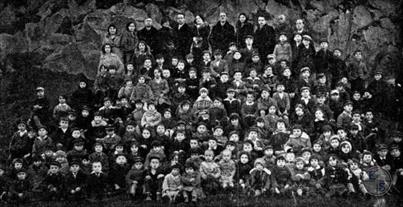 |
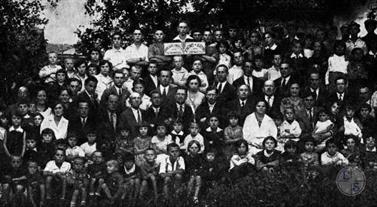 |
| The students and teachers of “Tarbut” School in Korets, 1933 | TOZ's summer colony in the Korets castle, 1934 |
In 1926, a public assistance institution “Kupat Gemilut Hasadim” was created in Korets. The goal was to ease the difficult economic situation of city's poor. The fund's support saved the small merchants, who constituted the decisive majority of Korets' trade, from economic collapse and hunger. The founders of the fund were: HaRav Lidski, Dr. Zeitlin, Shmuel Switzer, Nachman Rachman, Pinchas Hendler, Herzl Frenkel, Eliezer Brandes and Dov Bernstein.
In light of the great poverty that prevailed in the city, the fund served as a source of salvation and welfare for many families who barely supported themselves, but never reach bankruptcy. They lived and hoped for better times, to life with ample livelihood.
Over time, there was a change of personnel in the fund's management. Tzvi Himmelfarb was placed as its leader. The committee members were: Natzi Wilner, Dov Bergel, Avraham Neiterman, Yakov Riess, Nachman Rachman, Yosef Kaminstein, Dov Bernstein, Avraham Brada and Yokel Marcus. This committee served until the Soviet occupation of the city.
After the First World War, Korets was a border city, and contained many refugees who wandered and fled from Russia and Ukraine. Korets served as a transit station to Poland and all parts of the world for these refugees. Many lost children, survivors of the pogroms, wandered together with these refugees. To facilitate, to some extent, the harsh and cruel fate of these orphans, a group of compassionate Jews, residents of Korets, organized an “orphanage”.
The institution was located in one of the buildings in Kosciuszko Street, and around 70 orphans were educated in it. Most of them immigrated to Israel.
The Orphanage was destroyed with the outbreak of the Holocaust and most of the activists passed away.
In light of the great poverty that prevailed in the city, the fund served as a source of salvation and welfare for many families who barely supported themselves, but never reach bankruptcy. They lived and hoped for better times, to life with ample livelihood.
Over time, there was a change of personnel in the fund's management. Tzvi Himmelfarb was placed as its leader. The committee members were: Natzi Wilner, Dov Bergel, Avraham Neiterman, Yakov Riess, Nachman Rachman, Yosef Kaminstein, Dov Bernstein, Avraham Brada and Yokel Marcus. This committee served until the Soviet occupation of the city.
After the First World War, Korets was a border city, and contained many refugees who wandered and fled from Russia and Ukraine. Korets served as a transit station to Poland and all parts of the world for these refugees. Many lost children, survivors of the pogroms, wandered together with these refugees. To facilitate, to some extent, the harsh and cruel fate of these orphans, a group of compassionate Jews, residents of Korets, organized an “orphanage”.
The institution was located in one of the buildings in Kosciuszko Street, and around 70 orphans were educated in it. Most of them immigrated to Israel.
The Orphanage was destroyed with the outbreak of the Holocaust and most of the activists passed away.
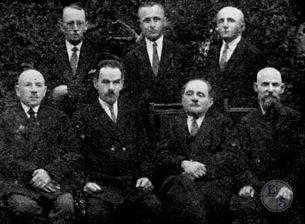 |
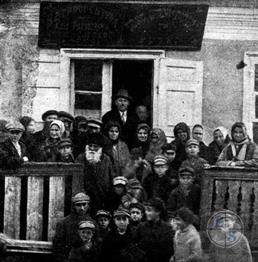 |
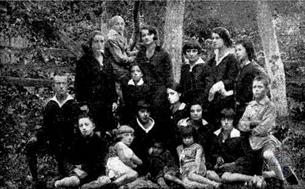 |
| The founders of “Kupat Gemilut Hasadim” | The office of “Kupat Gemilut Hasadim” | The “Orphanage” in Korets |
On July 5, 1941, the crook was occupied by the Wehrmacht troops. Immediately after the capture of the city, local residents arranged a pogrom. Several Jews were killed, all Jewish houses were plundered.
In the summer of 1941, two "actions" were held in the Korets. The first was held on July 9. In the forest, 2 km from the city, 120 Jews-inteligents were shot. During the second action in August 1941, 350 Jewish men were shot near the village of Sukhovolya.
The third action took place on May 21, 1942. About 2.5 thousand Jews were killed in the forest near the village of Kozak.
Immediately after the third action, a ghetto was created, which existed 4 months, until September 25, 1942. On this day, about 2 thousand Jews were killed near the village of Kozak.
In total, according to the Extraordinary State Commission, 5090 Jews were killed in the Korets district.
The surviving Jews led by Moshe Guildenman went into the forest. In 1943, the group fought in the detachment of A.N. Saburov, creating a separate Jewish company under the command of G. Rosenblat.
In the summer of 1941, two "actions" were held in the Korets. The first was held on July 9. In the forest, 2 km from the city, 120 Jews-inteligents were shot. During the second action in August 1941, 350 Jewish men were shot near the village of Sukhovolya.
The third action took place on May 21, 1942. About 2.5 thousand Jews were killed in the forest near the village of Kozak.
Immediately after the third action, a ghetto was created, which existed 4 months, until September 25, 1942. On this day, about 2 thousand Jews were killed near the village of Kozak.
In total, according to the Extraordinary State Commission, 5090 Jews were killed in the Korets district.
The surviving Jews led by Moshe Guildenman went into the forest. In 1943, the group fought in the detachment of A.N. Saburov, creating a separate Jewish company under the command of G. Rosenblat.
To the west of the city, beyond the river Korchik, is the village of Novyy Korets (New Korets). At the beginning of the 20th century, it was a separate township with his Jewish community.
In 1897, 951 Jew lived in Novyy Korets (38%),
in 1921 - 232,
in 1931 - approx. 300 Jews.
At the end of the 19th century, Jews owned several shops, brewery, 2 taverns.
In 1942, the Jews of Novyy Korets were sent to the Korets ghetto and later killed with local Jews.
In 1897, 951 Jew lived in Novyy Korets (38%),
in 1921 - 232,
in 1931 - approx. 300 Jews.
At the end of the 19th century, Jews owned several shops, brewery, 2 taverns.
In 1942, the Jews of Novyy Korets were sent to the Korets ghetto and later killed with local Jews.

- Home
- Shtetls
- Vinnytsia region
- Volyn region
- Dnipro region
- Donetsk region
- Zhytomyr region
- Zakarpattia region
- Zaporizhzhia region
- Ivano-Frankivsk region
- Kyiv region
- Kropyvnytskyi region
- Luhansk region
- Lviv region
- Mykolayiv region
- Odessa region
- Poltava region
- Rivne region
- Sumy region
- Ternopil region
- Kharkiv region
- Kherson region
- Khmelnytskyi region
- Chernihiv region
- Chernivtsi region
- Cherkasy region
- Crimea
- Synagogues
- Cemeteries
- Objects & guides
- Old photos
- History
- Contact
Jewish towns of Ukraine
My shtetl
My shtetl
Donate
Jewish towns of Ukraine
